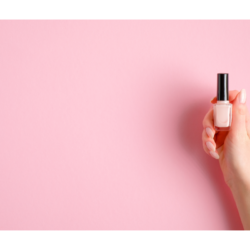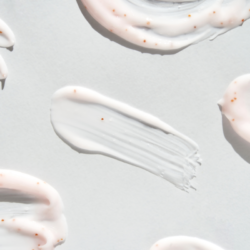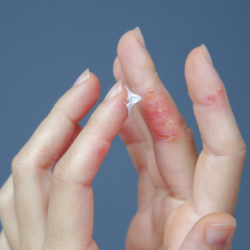Vitiligo is an autoimmune disease characterised by a loss of pigmentation in the skin, resulting in white patches on various parts of the body. Although its treatment is often complex, incorporating natural food supplements can help stimulate repigmentation and slow the progression of the disease.
The role of vitamins in the treatment of vitiligo
The treatment of vitiligo using food supplements has shown promise in numerous studies. Vitamins play a key role in the synthesis of melanin and in strengthening the immune system, helping to slow the progression of this autoimmune disease. Here is a detailed overview of essential vitamins and their role in the treatment of vitiligo.
Vitamin B12 and folic acid: pigmentation allies
Vitamin B12, or cobalamin, and folic acid (vitamin B9) are essential nutrients for DNA synthesis and melanin production. A study conducted at Birmingham Medical Centre found that vitiligo patients with low levels of these vitamins showed significant improvements after regular supplementation. Combined with controlled exposure to the sun, this supplementation promoted repigmentation in depigmented areas.
The underlying mechanisms appear to be linked to an improvement in the viability of melanocytes, the cells responsible for melanin production. These results indicate that regular intake of vitamin B12 and folic acid could not only slow the progression of vitiligo but also reverse its effects in certain cases.
Vitamin D: a key immune modulator
Vitamin D is crucial for the proper functioning of the immune system. In the context of vitiligo, it acts by regulating autoimmune responses while stimulating melanin production via its specific receptors on melanocytes. A pilot study showed that the administration of 35,000 IU of vitamin D3 over a six-month period resulted in significant repigmentation in 14 out of 16 patients, with results ranging from 25% to 75%.
The importance of vitamin D also lies in its ability to reduce oxidative stress, an aggravating factor in the destruction of pigment cells. Appropriate vitamin D supplementation, particularly for patients with vitamin D deficiency, is therefore highly recommended as part of a holistic treatment for vitiligo.
Watch out for vitamin C
Unlike the previous vitamins, vitamin C should be consumed with caution by vitiligo patients. Although its antioxidant properties are generally beneficial, it can inhibit melanin synthesis, making its use contraindicated in this context.
What minerals are essential for repigmentation?
Minerals play a crucial role in the repigmentation process and in protecting melanocytes. They are involved in vital enzymatic mechanisms that enable melanin production and help protect cells against oxidative damage. Here is an overview of the most important minerals to support the treatment of vitiligo.
Zinc: a powerful protector against oxidative stress
Zinc is an essential mineral involved in many biological functions, including the regulation of several antioxidant enzymes. One of these enzymes, superoxide dismutase, plays a key role in neutralising the free radicals that can damage melanocytes. By protecting these cells against oxidative stress, zinc helps preserve their melanin production function.
Studies have shown that zinc supplementation, when combined with topical steroids or UV-B phototherapy, can significantly improve the repigmentation of areas affected by vitiligo. In addition, zinc helps to reduce inflammation, a factor often implicated in the progression of the disease.
However, it is important to note that excessive doses of zinc can cause side effects, in particular gastrointestinal problems. Supplementation should therefore be supervised by a health professional.
Copper: a key cofactor in melanin synthesis
Copper, although less often used in the treatment of vitiligo, plays an essential role as an enzyme cofactor. It is involved in the activation of tyrosinase, an enzyme crucial to melanin synthesis. Adequate levels of copper are therefore necessary to ensure that this process functions optimally.
Although research is still limited, some studies suggest that copper deficiency may be associated with reduced pigmentation. Therefore, maintaining an adequate copper intake through diet or supplements may have significant benefits for vitiligo patients.
The main dietary sources of copper include :
- Seafood, such as oysters.
- Nuts and seeds, particularly cashew nuts and sunflower seeds.
- Legumes and wholegrain cereals.
Medicinal plants and natural extracts: a complementary approach to treating vitiligo
In addition to vitamins and minerals, certain medicinal plants offer significant benefits in the treatment of vitiligo. Thanks to their antioxidant, anti-inflammatory and immunomodulatory properties, they play a key role in protecting melanocytes and improving repigmentation.
Ginkgo biloba: a powerful antioxidant against oxidative stress
Ginkgo biloba is an ancient plant recognised for its many health benefits, particularly in the management of diseases linked to oxidative stress, such as vitiligo. This plant acts primarily by reducing the activity of free radicals, which damage pigment cells.
A clinical study showed that administering 60 mg of Ginkgo biloba twice a day for 12 weeks slowed the progression of vitiligo in 80% of participating patients. What’s more, some of them experienced partial repigmentation, particularly in areas such as the face and neck (1)
The anti-inflammatory properties of this plant also help to modulate the immune response, limiting the autoimmune attack against melanocytes. In addition, its anxiolytic effect could help reduce emotional stress factors, known to exacerbate vitiligo in some patients.
Polypodium leucotomos: a natural shield against UV rays
Polypodium leucotomos is a tropical fern extract that has gained popularity in the treatment of skin disorders, including vitiligo. Its main benefits lie in its photoprotective and immunomodulatory effects, making it an ideal complement to UV-B phototherapy.
Research shows that this plant improves the skin’s tolerance to UV rays, while increasing the efficacy of light-based treatments. This is particularly relevant for vitiligo patients, as UV exposure is often used to stimulate repigmentation. One study found that patients receiving Polypodium leucotomos supplementation alongside phototherapy sessions experienced accelerated repigmentation and fewer side effects associated with UV exposure. (1)
In addition to its photoprotective effect, Polypodium leucotomos acts as a powerful antioxidant and helps regulate immune responses, reducing inflammation and protecting melanocytes.
How can these plants be used to treat vitiligo?
To reap the full benefits of Ginkgo biloba and Polypodium leucotomos, it is essential to use them as part of an overall treatment protocol, in addition to other interventions such as topical therapies or phototherapy. Consultation with a healthcare professional is strongly recommended to determine the optimal dosage and duration.
Source of information:
- Dutta RR, Kumar T, Ingole N. Diet and Vitiligo: The Story So Far. Cureus. 2022 Aug 28;14(8):e28516. doi: 10.7759/cureus.28516. PMID: 36185835; PMCID: PMC9515252.





